trainer
K-8 trainer 1/72 scale Trumpeter kit: review and modelling report
page 2
page 3
page 4
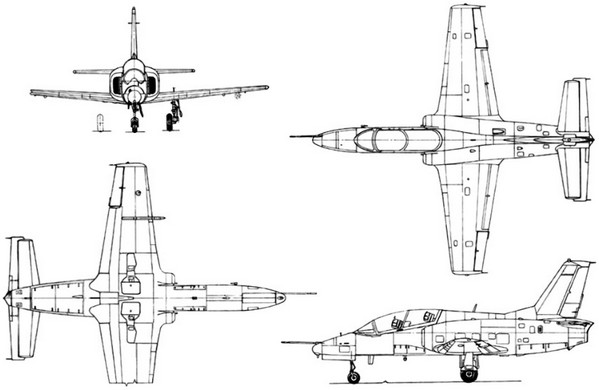
In the nineteen
nineties both China and Pakistan required a new advanced jet trainer and a joint
project was started. The two countries
already worked together on aircraft
programs before, like license build and adapted MiGs and many more.
The
Hongdu JL-8 is a
two-seat intermediate jet trainer and light attack aircraft designed in
the People’s Republic of China by China Nanchang Aircraft Manufacturing
Corporation with co-production with Pakistan Aeronautical Complex (PAC). The primary contractor is the Hongdu Aviation Industry
Corporation. One of its export variants, K-8P Karakorum is co-produced
by the Pakistan Aeronautical Complex (PAC). The
PAC K-8 is called the Karakorum (old capital of Genghis
Khan's empire). The JL-8 / K-8 has a
multi-role capability for training and, with little modification, can
also be used for airfield defense. The aircraft is supposed to be as
cost-effective as possible, with a short turn-around time and low
maintenance requirements.
First JL-8 flight was November 1990, powered by a Honeywell TFE731 jet engine. Its export variants K-8E and K-8P which have different powerplants and
avionics.
In China it is used by the training academy with nick name JL-8 "Mighty Eagle". Exports of this aircraft ....... were done to Egypt and a dozen other countries.
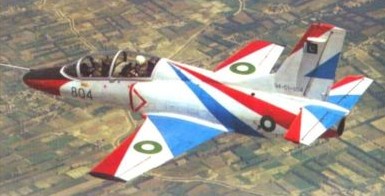 .
.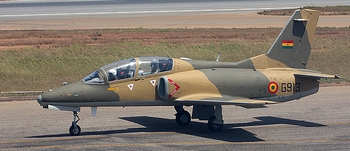
Pakistani and Ghana
![]()
Photo update 70 th aniversary China PDRC (Oct. 1, 2019)

The K-8 is for Western modellers a strange subject and is very welcome that unusual subjects pop up once in a while from Trumpeter. The kit has a about 50 grey parts which are crisp and fine and has nice recessed panellines. The canopy is cristal clear as well. There are a couple of fuel tanks in the kit with a gunpod (which I did not use).
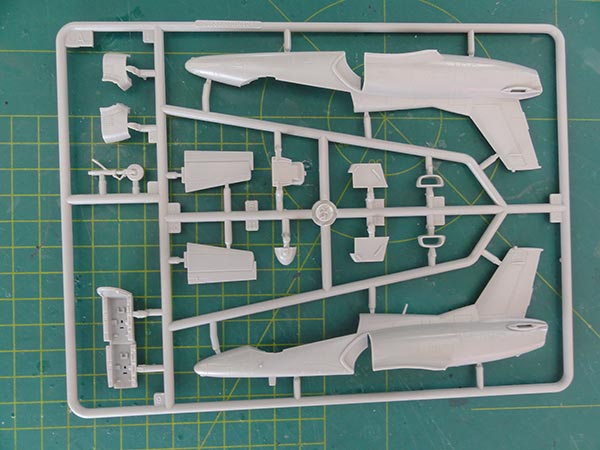
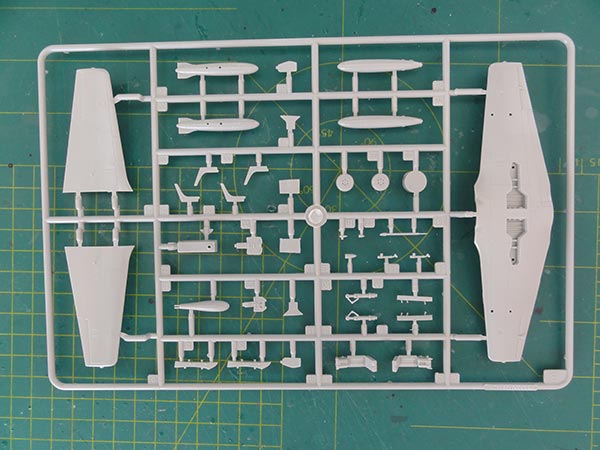
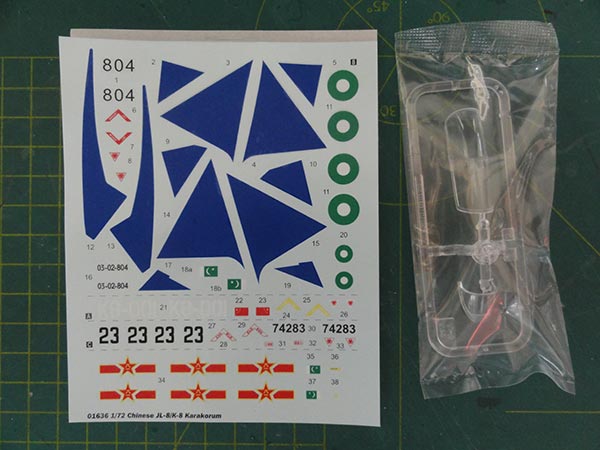
Decals
are provided for 3 schemes:


Kit
assembly was straight forward
and only a tiny amount of filler was needed, particularly at the
intakes and fuselage wing joints.
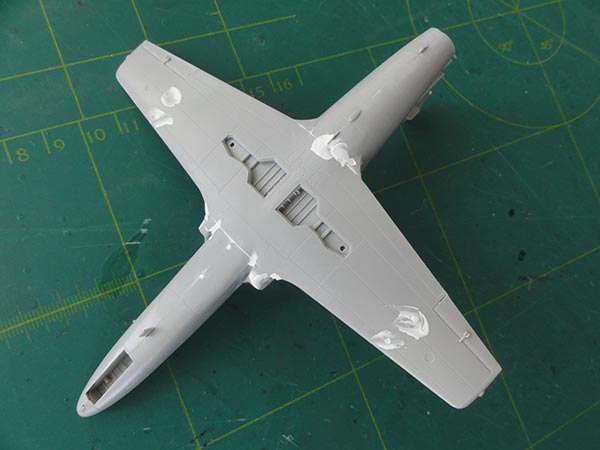
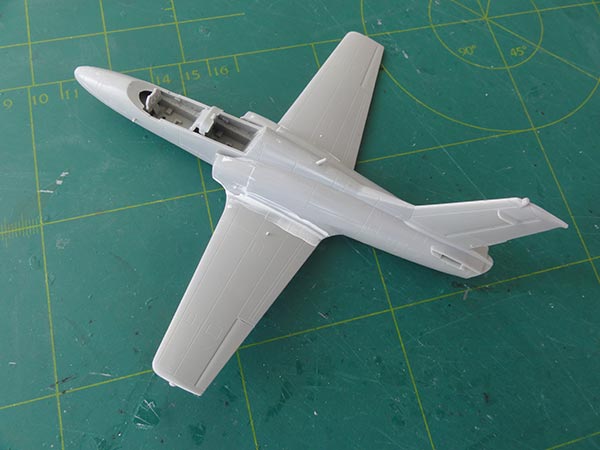
Inside the nose, just add some weight just in case to prevent tail sitting.
- the control sticks (parts #B14) fit better when the locating lug is reduced in size;
- add a few pieces of plastic card aft of the intake to suggest "tunnel";

- the "gear down indicators" on top of the wing are nicely done in the kit but I removed them to enable wing-root sanding and replaced them with metal ones.
- the tailplanes dihedral angles as per kit is far too large; trim the locating fairing at front at the fuselage to get only slight dihedral of say 3 degrees.
- the main gear legs fit better when enlarging a bit their locating holes in the bays;
- the nose wheel doors are more easily fitted BEFORE installing the nose gear leg #A3;
- the nose pitot #B16 is better fitted just before completion;
- the wind screen #C1 will fit (may be you need to remove some tiny flash), but some white glue is needed to close the gaps; paint the white glue once dried in the appropriate colours.
After
basic assembly, a first coat
of light grey was air brushed to check for any flaws. It seemed
OK.
 .
.
![]()
KIT 1: Pakistan Air Force
It was decided to choose scheme as per kit. Scheme [B] with red-white and blue stripes of Pakistan AF was picked. The colours were applied with the air brush .
First, the overall gloss white colour was airbrushed, after drying areas for the red colours were masked with low tack TAMIYA tape and airbrushed. You have no choice as the red stripes were missing in the decal sheet (the blue is provided as decals). The decals are fine and thin.
The landing gears were installed and painted light grey and tyres tyre-black/grey. with their bays light grey. (the oleos were painted silver) .
Next, additional work on detailing the model:
(1) the clear blast screen in the canopy is missing between front and rear seat; this was made from thin clear sheet and added inside the canopy;
(2) I added 2 mirrors at the front canopy edge and in the back 2 mirrors for the instructor on stacks at that blast screen; mirrors came from a REHEAT mirror etched metal set.

(3) in the cockpit some bits and pieces
were added but what you get is nice in the kit, only replace the
gunsight/HUD. I painted the cockpit interior light grey.
No decals are provided for the raised instrument panels, these were
"dry brushed" with black paint. The real instrument panels are seen here:
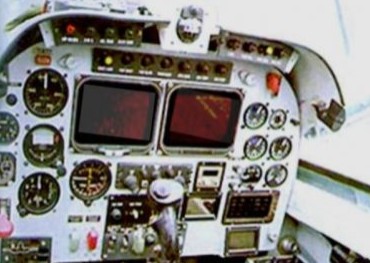 .
. 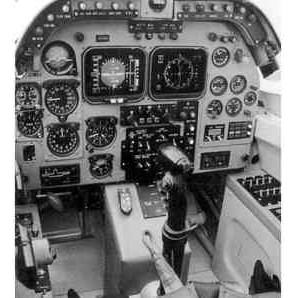
rear and front panels
(4) the large pitot tube #B16 was fitted; better is to remove the small locating lug and the big pitot should be moved 2 mm more aft for a correct position;
(5) a small extra pitot sensor was added in front of the windscreen amidst the upper anti-glare panel;
(6) the seats got some harness straps made from tape;
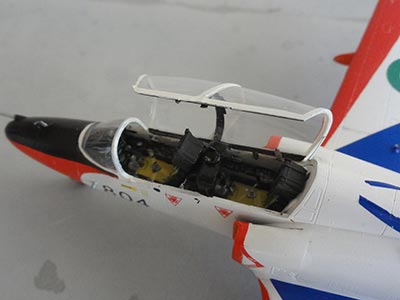
(7) at the upper right and lower left tailplane elevator trim tab an actuator rod was added from thin sprue;
(8) the right nose sensor (part #18) on many aircraft is a straight probe (like on the left side);
(9) the gun pod #B13 is often seen to be different in shape on real
aircraft;
(10) paint the anti-collision lights at wing tips and top of tail;
(11) static dischargers were added made from thin flexible fishing wire: 2 at the ailerons, 2 at elevator and 1 at rudder tip.
A slight darker wash was applied at the recesses of ailerons and elevator. Finally, the whole model got a sealing Johnson Future coat airbrushed on to it.
The canopy was set open and turned to the right. That competed this nice model of an unusal type.
NOTE: on the Pakistan K-8 model below I did not correct the stabilizer dihedral. This model was made in 2014 and I had not discovered this yet. and... It was pointed out that the nose wheel leg position I had wrongly glued (inverse)!!! Was corrected as well!
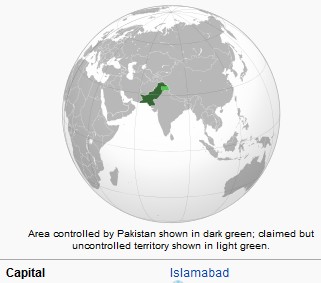

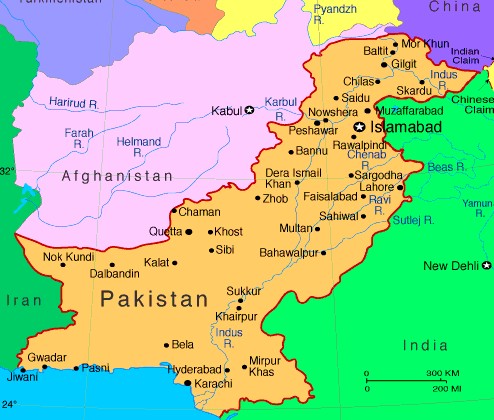
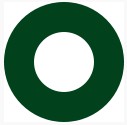
Pakistan air force was established in 1947. It was involved in various conflicts with neighbor India and tensions are still there after so many years. It was supported by the USA in those days. In the 1960s jet aircraft like the F-86, F-104 and B-57 played an important role. Also other Western aircraft were purchased like Gnats and Mirage III attack aircraft. The regional wars like in Afghanistan and terrorist threats still plays an unstabilizing role. The K-8 Karakorum was developed with China were it is known as the Hongdu JL-8. Over 60 K-8 trainers are probably used. Meanwhile many Mirage III/ V are in service along with Chengdu F-7 fighters. Other aircraft are a large variety of transports and trainers like the T-37 and PAC MFI-17 basic trainers and many helicopters. It is hoped that modern F-16s will be supplied by the USA and the own Pakistan JF-17 Thunder enters service.
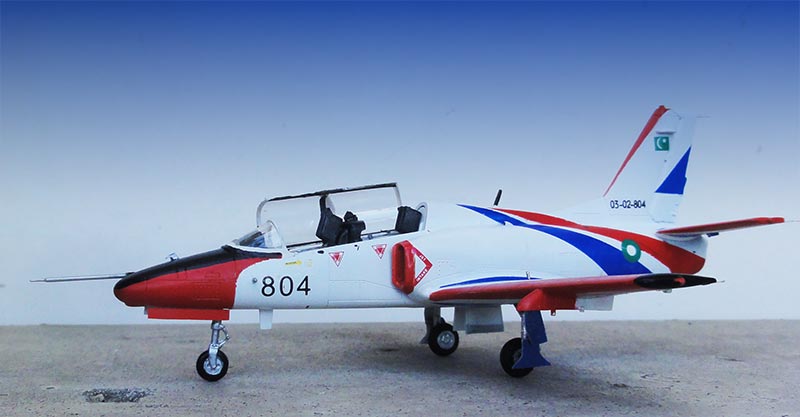
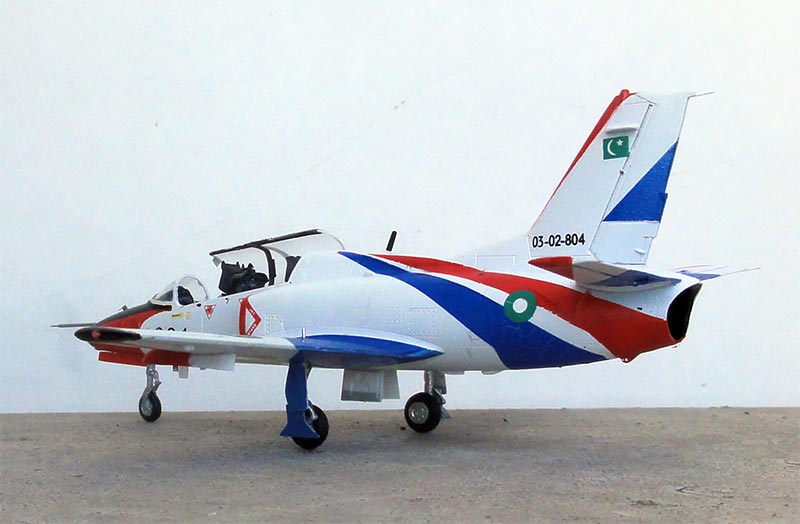
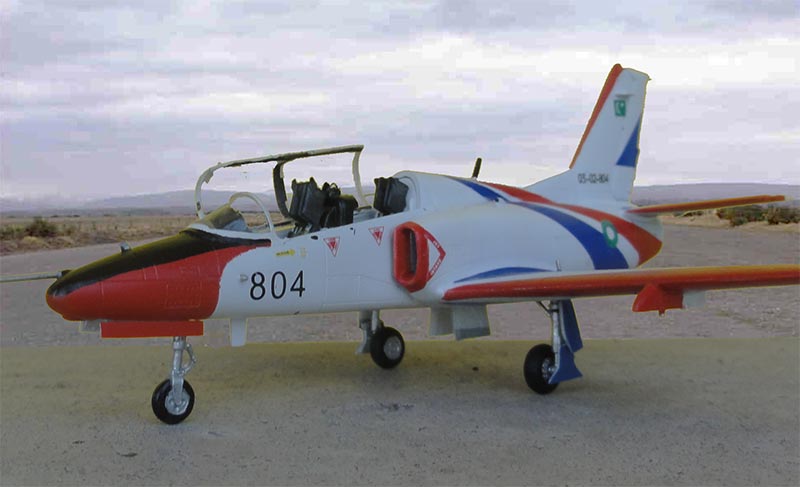


K-8 Karakorum PAKISTAN AIR FORCE in special livery
On to next K-8 [ Page 2..... ]
Back to 1/72 Models

(c) Copyright Meindert "designer"/ All rights reserved. Your comments are welcomed by webmaster
Created April 22, 2014